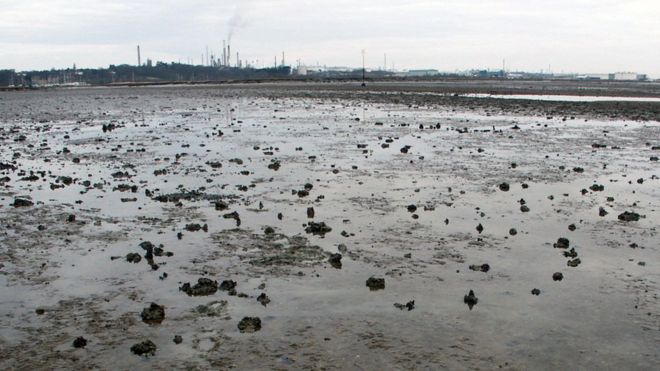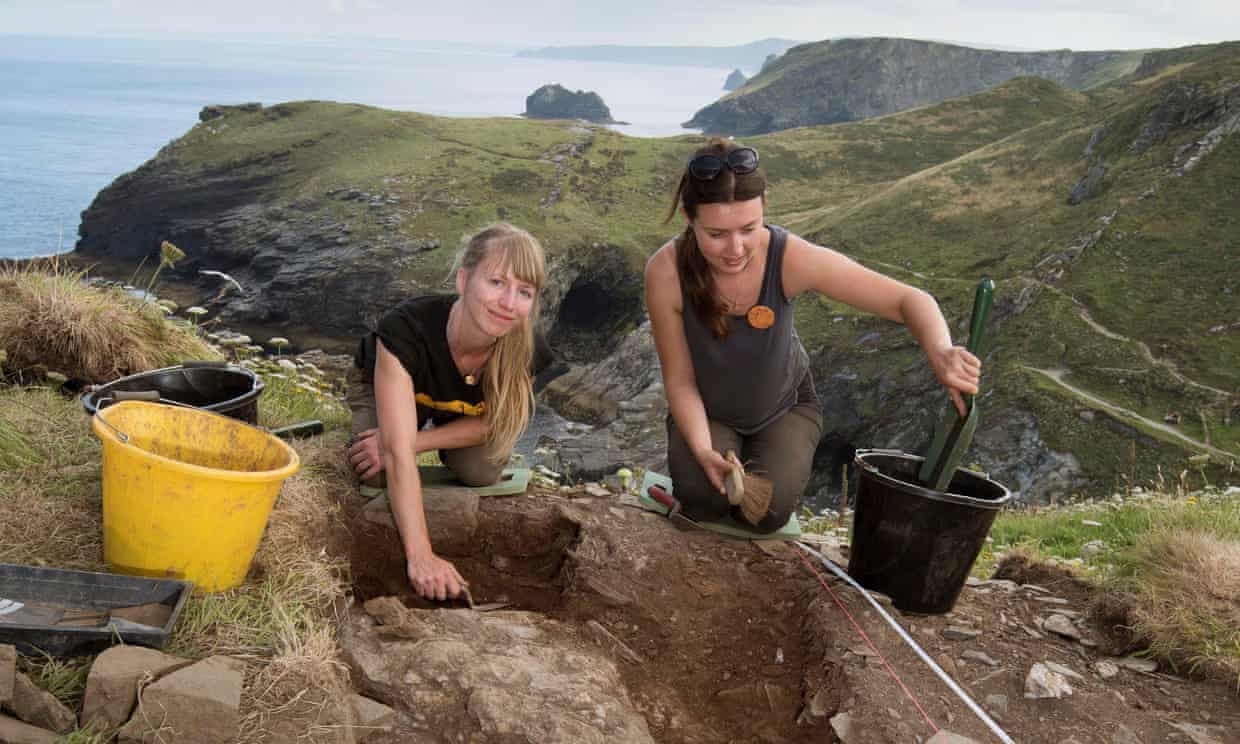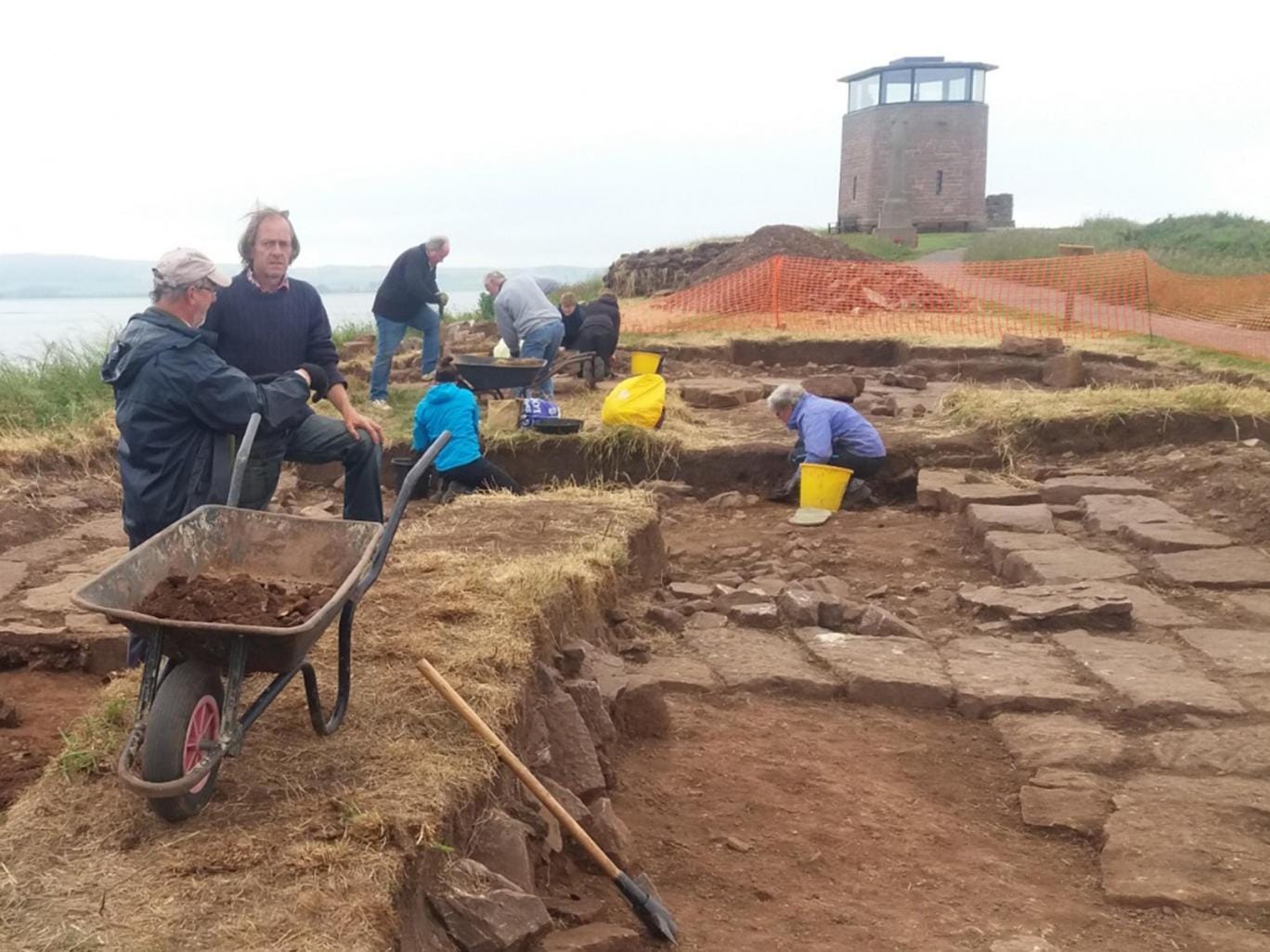The Anglo-Saxon Archaeology Blog is concerned with news reports featuring Anglo-Saxon period archaeology. If you wish to see news reports for general European archaeology, please go to The Archaeology of Europe Weblog.
Thursday, 27 July 2017
Wednesday, 26 July 2017
Archaeologists Return to Legendary Birthplace of King Arthur
Archaeologists have completed the first stage of a major five-year study of the archaeology of the Tintagel headland in Cornwall, in the southwest of England. In English folklore, the site is thought to be the birthplace of King Arthur.
Credit: Emily Whitfield-Wicks/English Heritage
Archaeologists are back at the legendary birthplace of King Arthur.
Last summer, researchers discovered traces of early medieval life at Tintagel in Cornwall, on England's southwest coast, where the legendary British monarch was said to have been born.
Now, they've returned to the site for another round of digging, to further explore buried buildings dated from the fifth to the seventh centuries.
Read the rest of this article...
1,100-year-old coin found in royal Pictish power centre
The 1,100-year-old coin found at an archaeological dig at Burghead Fort. Picture: PA
A 1,100-year-old coin is amongst a series of discoveries made at what experts believe was a royal power centre of a northerly Pictish kingdom.
The coin was found along with the remains of a longhouse at Burghead Fort near Lossiemouth, which was thought to have been largely destroyed by the development of a new town during the 19th century.
Now archaeologists from Aberdeen University hope further significant findings will be revealed at the site – a probable seat of power of Northern Pictland between 500AD and 1000AD, given the fresh discoveries.
Read the rest of this article...
Casting light on the Dark Ages: Anglo-Saxon fenland is re-imagined
What was life in the fens like in the period known as the dark ages? Archaeologist Susan Oosthuizen revisits the history of an iconic wetland in the light of fresh evidence and paints a compelling portrait of communities in tune with their changeable environment. In doing so, she makes an important contribution to a wider understanding of early medieval landscapes.
The East Anglian fens with their flat expanses and wide skies, a tract of some of the UK's richest farmland, are invariably described as bleak – or worse. Turn the clock back 1,000 years to a time when the silt and peat wetlands were largely undrained, and it's easy to imagine a place that defied rather than welcomed human occupation.
Historians have long argued that during the 'dark' ages (the period between the withdrawal of Roman administration in around 400 AD and the Norman Conquest in 1066) most settlements in the region were deserted, and the fens became an anarchic, sparsely inhabited, watery wilderness.
A new interdisciplinary study of the region by a leading landscape archaeologist not only rewrites its early history across those six centuries but also, for the first time anywhere in Europe, offers a detailed view of the settlement and agricultural management of early medieval wetland landscapes.
Read the rest of this article...
Highland Cattle grazing in the Wicken Fen [Credit: © Wicken Fen]
Historians have long argued that during the 'dark' ages (the period between the withdrawal of Roman administration in around 400 AD and the Norman Conquest in 1066) most settlements in the region were deserted, and the fens became an anarchic, sparsely inhabited, watery wilderness.
A new interdisciplinary study of the region by a leading landscape archaeologist not only rewrites its early history across those six centuries but also, for the first time anywhere in Europe, offers a detailed view of the settlement and agricultural management of early medieval wetland landscapes.
Read the rest of this article...
Thursday, 20 July 2017
Southampton Water fish trap dated to Saxon times
The trap was found by chance close to the Fawley oil refinery by archaeology students more than 10 years ago.
A timber fishing trap exposed on the Hampshire coast dates back to Saxon times, it has been confirmed.
The weir, built as a permanent wooden structure to catch fish as the tide ebbed, was found by chance on the shore of Southampton Water in 2005.
Radiocarbon dating has shown it was built in the 8th or 9th centuries.
Experts from Exeter University said the results were "thrilling" and provided new insights into the process of coastal erosion in the area.
Read the rest of this article...
Wednesday, 19 July 2017
Archaeologists discover mound next to Slough car park is 'prestigious' Anglo-Saxon monument
Archaeologists have found that a 20-foot high mound in Slough, thought to be a Norman castle motte and for centuries the centrepiece of a bizarre Eton College ceremony, is actually a rare Saxon monument, built 1,500 years ago.
University of Reading archaeologists say that Montem Mound in the Berkshire town, now surrounded by Municipal buildings and car parks, dates roughly to the same time as the famous burial mounds of Sutton Hoo in Suffolk, and the nearby burial mound at Taplow. It is likely to mark the resting place of someone of high status and could contain artefacts.
The discovery of the 'Sutton Hoo of Slough' is a remarkable finding as only a handful of mounds from this period are known about. The findings go against the previous assumption that it was a Norman Conquest-era 'motte and bailey' castle.
Dr Jim Leary, the University of Reading archaeologist who led the investigation in December 2016, said: "Conventional wisdom placed the Montem Mound 500 years later, in the Norman period. But we have shown that it dates to between the 5th and 7th centuries, not long after the collapse of Roman Empire.
Read the rest of this article...
Sunday, 16 July 2017
One of the most important buildings in history of Christianity discovered off Scottish coast
Archaeologists have located one of the most important buildings in the history of Western European Christianity – but it’s not a vast cathedral or an impressive tomb, but merely a humble wattle and daub hut on a remote windswept island.
Using radiocarbon dating techniques and other evidence, the scholars – from the University of Glasgow – believe they have demonstrated that the tiny five-metre square building was almost certainly the daytime home of early medieval Scotland’s most important saint, St Columba.
Located on the island of Iona, off the west coast of Scotland, the unprepossessing hut was probably the first administrative hub of the monastic community he founded – and whose monks, over succeeding centuries, went on to establish similar monasteries in mainland Scotland, in north-east England, in Belgium, in France and in Switzerland.
Read the rest of this article...
Tintagel excavations reveal refined tastes of medieval settlers
Archaeologists conducting the first research excavations at Tintagel in decades.
Photograph: Emily Whitfield-Wicks/English He/PA
Early Cornish kings feasted on a diet of oysters, roast pork and fine wine, eating and drinking from bowls imported from Turkey and glass goblets from Spain, a new dig at Tintagel Castle has suggested.
Discoveries made by the Cornwall archaeological unit (CAU) support the view that Tintagel was a royal site during the 5th and 6th centuries, with trading links reaching as far as the eastern Mediterranean.
Perched on Cornwall’s rugged north coast, Tintagel has for centuries been associated with the legend of King Arthur. Over the past 18 months, its custodian, English Heritage, has been accused of putting too much emphasis on the stories of Arthur and Merlin, rather than focusing on the site’s true, ancient Cornish heritage. The excavations, the first at Tintagel for decades, may help redress the balance.
Read the rest of this article...
Tintagel excavations reveal refined tastes of early Cornish kings
Tintagel is intricately bound up in the legend of King Arthur
[Credit: Emily Whitfield-Wicks/English Heritage Trust]
Discoveries made by the Cornwall archaeological unit (CAU) support the view that Tintagel was a royal site during the 5th and 6th centuries, with trading links reaching as far as the eastern Mediterranean.
Perched on Cornwall’s rugged north coast, Tintagel has for centuries been associated with the legend of King Arthur. Over the past 18 months, its custodian, English Heritage, has been accused of putting too much emphasis on the stories of Arthur and Merlin, rather than focusing on the site’s true, ancient Cornish heritage. The excavations, the first at Tintagel for decades, may help redress the balance.
The excavation also uncovered stone-walled structures on the southern terrace of Tintagel’s island area, with substantial stone walls and slate floors, accessed by a flight of slate steps.
Read the rest of this article...
Wednesday, 5 July 2017
One of Britain’s oldest churches discovered on Holy Island of Lindisfarne
Archaeologists have discovered one of Britain’s oldest churches.
The find – on the Holy Island of Lindisfarne, off the Northumberland coast – is of great historical importance because the newly discovered ancient church may originally have been built in or shortly after the mid 7th century AD as part of the monastic spiritual epicentre from which much of northern and central England was eventually Christianised.
It’s also important because it is likely to have been a key site at the spiritual heart of the early 8th-century monastic community that made Britain’s most famous early medieval illuminated manuscript – the Lindisfarne Gospels.
The evidence suggesting that this could be the site of one of Holy Island’s original early Anglo-Saxon period churches – perhaps even one built by the founder of Lindisfarne, St Aidan – is complex but persuasive.
Read the rest of this article...









